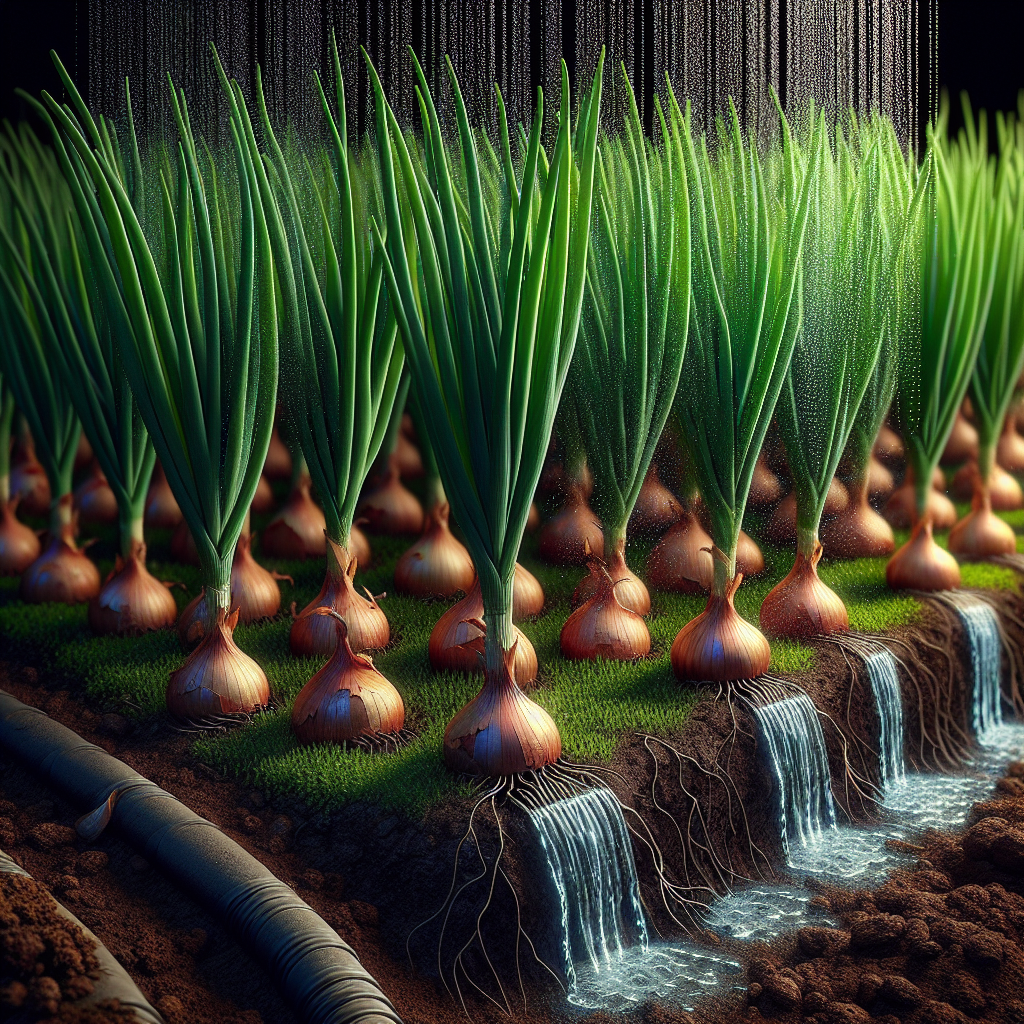Table of Contents
Onions are a versatile and flavorful vegetable that can be used in a wide variety of dishes. Whether they are caramelized, sautéed, or raw, onions add depth and complexity to recipes. To ensure that your onions grow to their fullest potential, it is important to provide them with the proper care and attention. One key aspect of growing healthy onions is ensuring they receive an adequate amount of water. In this article, we will explore the benefits of watering onions with a slow drip system and how this method can help your onions thrive.
Watering onions with a slow drip system involves providing a consistent and controlled amount of water directly to the plants’ roots. This method is more efficient than traditional watering methods such as overhead sprinklers or hand watering because it minimizes water waste due to runoff and evaporation. By delivering water directly to the root zone, a slow drip system ensures that the plants receive the moisture they need without drowning them or causing water stress. This targeted approach also helps prevent disease by keeping the foliage dry and reducing humidity levels around the plants.
The Benefits of Watering Onions with a Slow Drip System
1. Conserves Water: Slow drip systems use less water than traditional watering methods because they deliver water directly to the plant’s roots, reducing evaporation and runoff.
2. Promotes Healthy Growth: By providing a consistent supply of moisture to the roots, slow drip systems help onions develop strong root systems and grow larger bulbs.
How to Set Up a Slow Drip System for Onions
To set up a slow drip system for watering your onions, you will need a few key components:
- Drip tubing or soaker hoses
- Drip emitters
- Timer
- Pressure regulator
- Filter
To install the system, place the drip tubing or soaker hoses along the rows of onion plants, making sure that each plant’s root zone is covered. Attach drip emitters to the tubing at regular intervals to provide water directly to each plant. Connect the tubing to a timer so you can schedule watering times and durations. Use a pressure regulator to ensure that the system operates at the correct pressure, and use a filter to prevent clogs from debris in your water source.
Tips for Watering Onions with a Slow Drip System
1. Monitor Soil Moisture: Check your soil regularly to ensure it stays consistently moist but not waterlogged. Adjust your watering schedule as needed based on weather conditions and soil moisture levels.
2. Mulch Your Onions: Applying mulch around your onion plants can help retain soil moisture and reduce evaporation, making your slow drip system even more effective.
Frequently Asked Questions (FAQ)
Q: Can I use a slow drip system for other vegetables besides onions?
A: Yes! Slow drip systems are an excellent option for watering many types of vegetables, including tomatoes, peppers, carrots, and lettuce.
Q: How often should I water my onions with a slow drip system?
A: The frequency of watering will depend on factors such as weather conditions, soil type, and plant maturity. In general, aim for deep but infrequent watering sessions rather than shallow frequent ones.
In conclusion,
Watering onions with a slow drip system can help you grow healthy and robust plants while conserving water in an efficient manner. By providing consistent moisture directly to the roots, this method promotes strong growth and reduces disease risk associated with wet foliage. With proper installation and maintenance, a slow-drip system can be an invaluable tool for any onion grower looking to maximize their harvest.
Remember that each onion may have different needs depending on its growth stage – always adjust accordingly!














